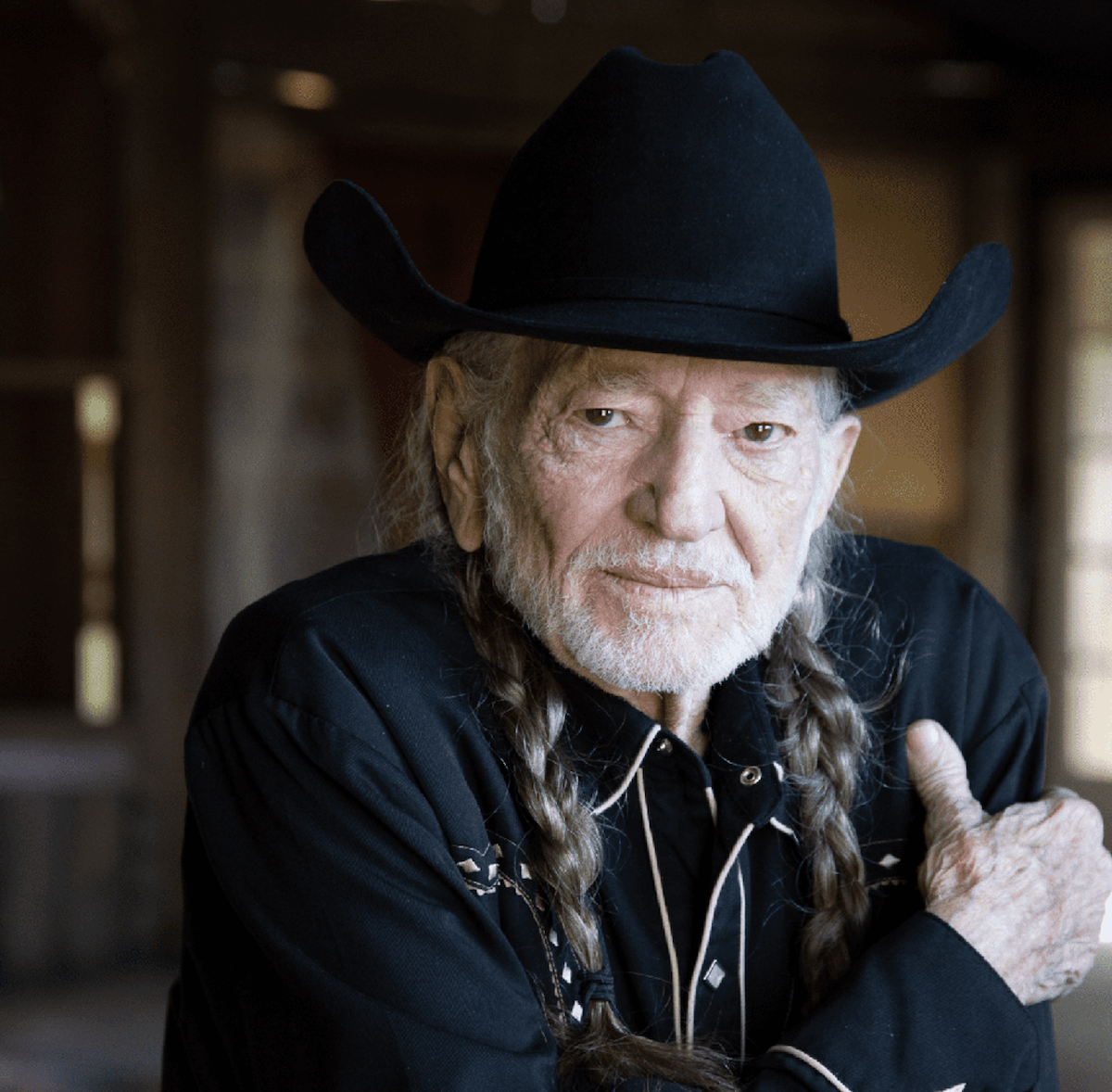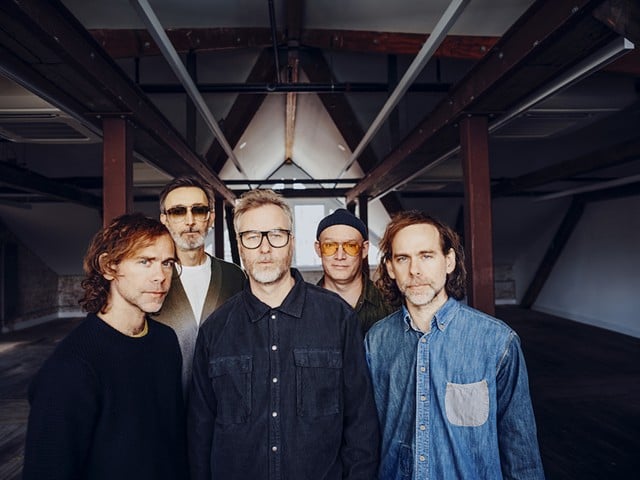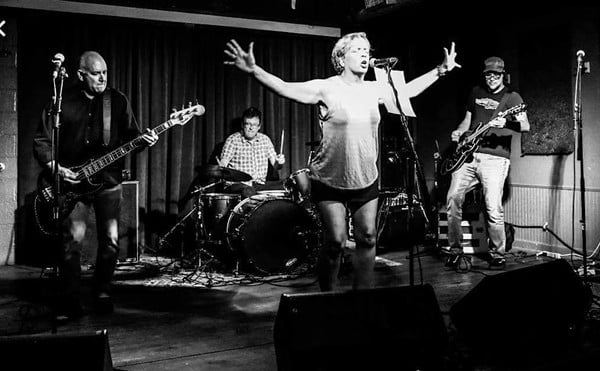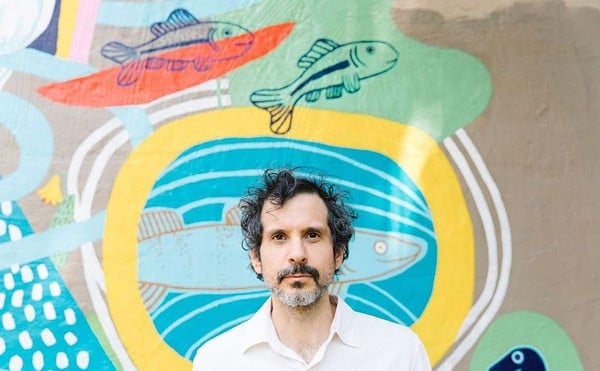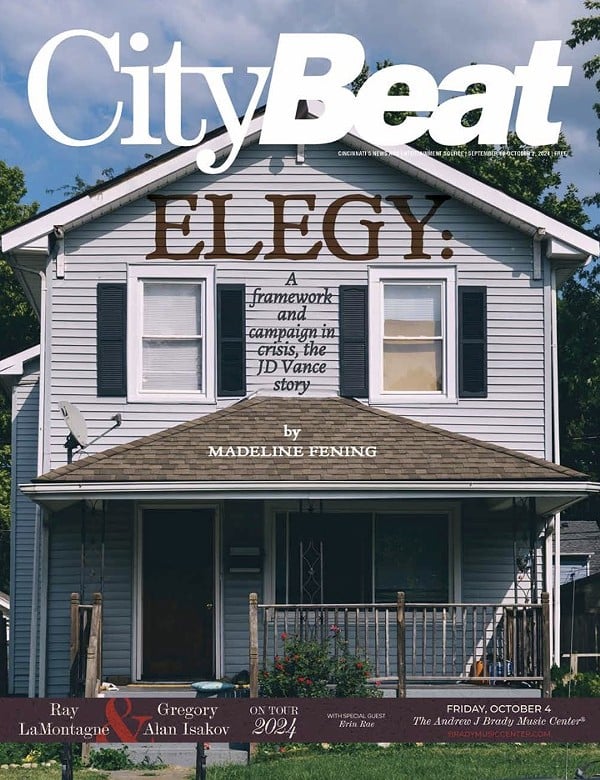Willie Nelson’s now-yearly tradition, the Outlaw Music Festival, rolled through town, making a stop at Riverbend Music Center on Sept. 11 with possibly its best lineup yet. Bob Dylan, one of the most singular and influential artists of the 20th century, along with Americana icon and hitmaker John Mellencamp, joined Nelson and his band, The Family, to celebrate a lifetime’s worth of music and memories.
The Outlaw Festival tour started in 2016 and has featured some of the greats, but this one made for a pretty substantial outing. A lot of people were able to check a few legends off their list and witness some of the greatest songwriting of the last six decades.
Longtime Family harmonica player Mickey Raphael talks a little about Nelson’s wide-ranging appeal. “I think what’s special is he really connects to everybody in the audience; he’s not pretentious at all,” Raphael tells CityBeat. “His music is something that everybody can relate to.”
Riverbend was packed on a hot sunny day and people poured in as Mellencamp played to what seemed like a near-capacity crowd. It’s sort of strange to see a set that early from an act and catalog the size of Mellencamp’s but that says everything about the rare lineup. Mellencamp had the crowd singing along during nearly half of his hit-filled set, which included back-to-back-to-back hits to set the night up for what was to come.
Dylan, 83, and Nelson, 91, both delivered great performances that left the crowd at Riverbend in awe. I had seen this same lineup some years ago when both appeared with Dylan on his “Bob Dylan Show” tour of minor league baseball stadiums back in 2009, and things seemed pretty much unchanged by time and age. All three acts hold the audience and deliver the timelessness and little sparks of creative genius they’re known for on the records, radio, movies and soundtracks of your life — this time, in the moment in real time, right in front of you.
Dylan and his band then took the relatively bare stage, featuring only a handful of glowing bulbs atop straight stands in front of a plain, crimson red curtain. Still in daylight, Dylan carried the audience through to the dark with a set punctuated by high point after high point. From the driving, organ-soaked high drama melancholy of “Love Sick” off his ‘97 Grammy-winning record Time Out of Mind, to the prophetic, almost-spoken-word version of his ‘60s protest era masterpiece, “A Hard Rain’s A-Gonna Fall,” that carried a weight of witnessing something historic.
It’s well known that Dylan does what he wants, and always has, but he can’t be accused of not being a crowd-pleaser, opening with “Rainy Day Women #12 and 35” (still somewhat of a tour rarity) with its “everybody must get stoned” innuendo chorus that makes it all too perfect for an audience waiting to see one of the most infamous pot smokers (maybe next to Snoop Dogg) of all time.
Also, his Chuck Berry cover, “Little Queenie,” showcased the band and kept the mood up, followed by a rendition of '50s vocal classic “Mr. Blue” by The Fleetwoods, showing another side of Dylan and an altered setlist compared to his recent Rough and Rowdy Ways tour.
Raphael joined Dylan and his band on the final two songs of his performance, the beautiful and poignant “Simple Twist of Fate” off Blood on the Tracks, a high watermark for songwriting and performance that showcased Raphael’s emotive howl on harmonica that is as distinct as a jazz player’s horn or a singer’s voice. Rapheal tells CityBeat he’s had fun playing on the shows with Dylan after he asked him to join in earlier on during the last leg of the tour.
Dylan and his band, accompanied by Raphael, finished the set punctuated by an exclamation point with the atmospheric tour-de-force “Ballad of a Thin Man,” originally on 1965’s Highway 61 Revisited, when Bob Dylan changed the world musically and culturally.
The version is not too unlike the one he played with The Band on his legendary first tour performing electric in 1965 and 1966, and this floats around in mind as you witness that same Dylan, albeit a little more subdued — a living artist still evoking the mystery and transcendent power all these years later — as the song takes the audience on its carnival ride through old, weird America and surreal imagery. The set ultimately ends with a crescendo featuring Raphael taking it up a notch, wailing over the driving piano and pounding drums backed by the rest of the band and followed by applause and amazement from this writer and the rest of the crowd.
After a sizeable intermission, the thick red curtain behind the stage is removed to reveal a stage-wide American flag on-screen. American treasure Nelson strolls onto stage with the thousands in attendance welcoming him and The Family.
They open with “Whiskey River” and the fun begins. The set has the feeling of a hootenanny or jamboree, especially on songs like Hank Williams cover “Move It On Over” and Nelson’s live show classic, “On the Road Again.”
One of the biggest responses of the night came after Nelson’s freewheeling solo on “Workin’ Man Blues.” Another highlight is his solo during “Angel Flying Too Close to the Ground,” which jumped between tenderness and defiance. Nelson plays in the moment and improvises often, creating a playing style all his own that incorporates licks akin to old cowboy songs, jazz chords and nearly abrasive attacks.
“You never know what he’s gonna do,” Raphael says. “So, he always keeps you on your toes. You just gotta really pay attention when you’re playing with him; you can’t put it on autopilot.”
Raphael adds a whole other layer of humanity to the show at times, such as with his emotional solo on “Georgia on My Mind,” which gets a huge round of applause. He plays accordion for “Last Leaf,” a Tom Waits cover that Nelson makes into a poignant and reflective statement on age and the fact that he’s the last of the great country singers still here. Nelson sings, “Autumn took the rest, but it won’t take me.” The song ends to an equally powerful response from the crowd.
Raphael has played with Nelson since 1973. He tells CityBeat he met Nelson through former University of Texas football coach Darrell Royal. “Coach had introduced us; coach was a friend of Willie’s and Willie had moved back to Texas, and I just kind of started sitting in at different places that Willie would play.”
Raphael has played with a laundry list of artists, including Emmy Lou Harris, Neil Young, Chris Stapleton and Norah Jones, among many others. That’s also him on Motley Crue’s 1985 hit “Smoking in the Boy’s Room.” “They were all fun. The Motley Crue one was great. Tommy Lee was in the studio with me and kind of directing me,” Raphael says.
He’s also the last of the Family’s original lineup. “I’m the only one left,” he says. Though this show features original Family guitarist, Waylon Payne, longtime Family guitarist Jody Payne’s son, on guitar next to Nelson, a spot one of Nelson’s sons, Micah and Lukas, usually occupies. Waylon Payne is a welcome addition, performing a couple of songs himself and breathing fresh life into hits like “Me and Bobby McGee.”
The inimitable Nelson is untouchable on classics like the remorseful “You Were Always on My Mind,” “Good Hearted Woman” (a song he did with now-passed collaborator Waylon Jennings) and newer show staple “Roll Me Up and Smoke Me When I Die.”
The show ends with country gospel standards “Will the Circle Be Unbroken?” and “I’ll Fly Away,” followed by Mac Davis cover “It’s Hard to Be Humble,” as it usually does. Hopefully that circle won’t ever be broken.

